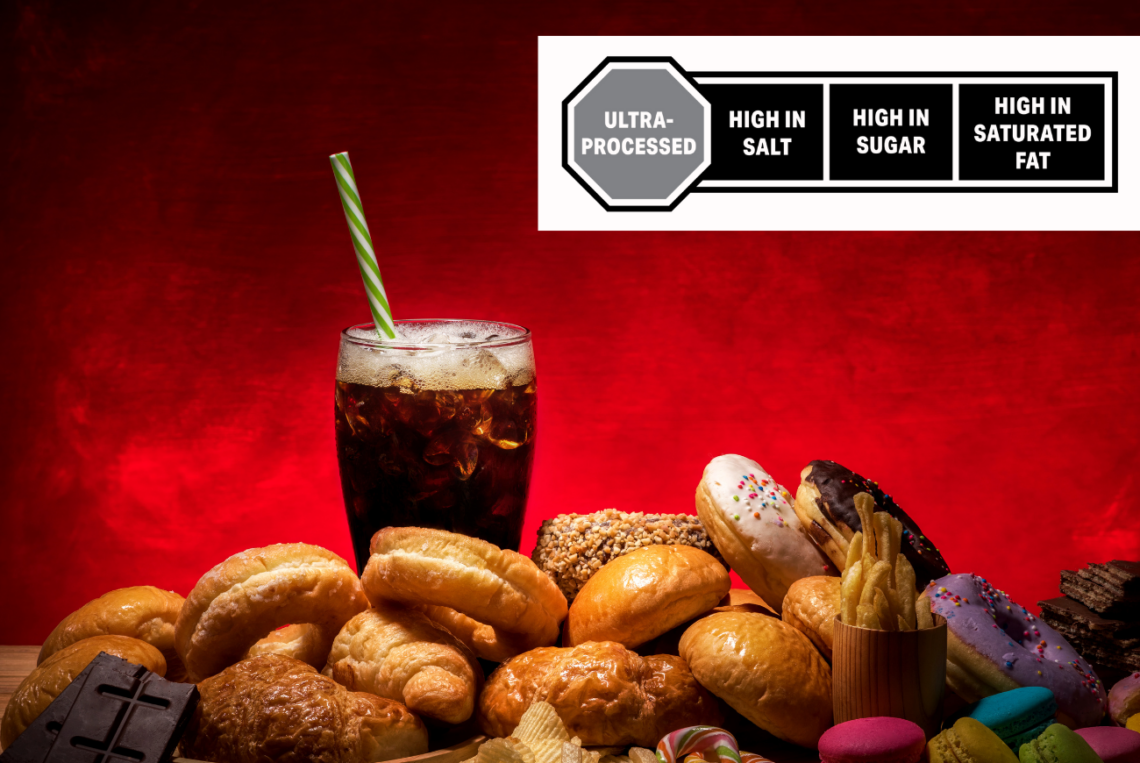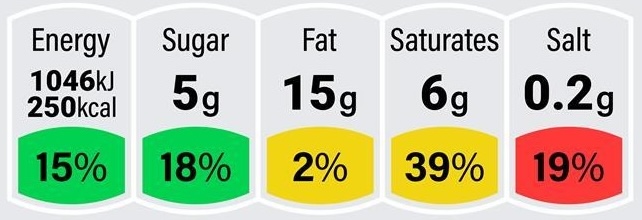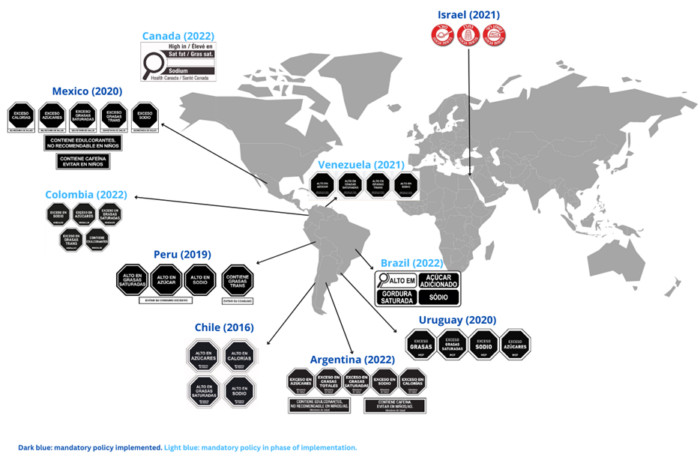
Do Food Warning Labels Really Work?
On a recent trip abroad, I couldn’t help but notice the abundance of food warning labels on items at the local mini-mart. Bold, bright labels reading “Danger: High Fat” or “Excess Sugar” were stamped across the front of snack packaging. I wasn’t surprised—I knew full well that the bag of chips I grabbed wasn’t the healthiest choice, but I really wanted to try them. When in Rome!
Still, it made me wonder—do food warning labels actually deter consumers? Do they influence purchasing behavior, or do people, like me, simply ignore them when cravings strike?
Let’s explore when and why food warning labels are used and whether they truly impact consumer choices at the grocery store.
What are Food Warning Labels?
Food warning labels are front-of-package (FOP) labels designed to inform consumers about the nutritional content or potential health risks of certain food products. They aim to help individuals make healthier choices by highlighting key concerns such as high sugar, sodium, saturated fat, or calorie content.
These labels are often mandatory in countries with public health initiatives targeting obesity, cardiovascular disease, and other diet-related conditions.
Types of Food Warning Labels
There are different categories of food warning labels, depending on the priorities of the health campaign and the information being communicated.
Nutrient-Specific Warning Labels

Traffic Light Warning Labels
Common in the UK, Ecuador, Spain, and Germany, this system color-codes nutrients as red (high), yellow (moderate), or green (low) to help consumers quickly assess health risks. While easy to interpret, some studies suggest it may not be as effective as more direct nutrient-specific warning labels.

Caffeine and Artificial Sweetener Warnings
Some countries, such as Colombia and Mexico, require labels on foods and beverages containing caffeine and artificial sweeteners like sucralose (Splenda) to help reduce sugar consumption and minimize health risks for children.

Where Are Food Warning Labels Used?
Ten countries worldwide have either implemented or are in the process of regulating mandatory food warning labels. Chile, Peru, Mexico, Uruguay, Argentina, and Israel have already enacted mandatory labeling, while Canada, Colombia, Brazil, and Venezuela are currently in the implementation phase. Although the format and wording of these labels are generally similar across countries, there are some variations.
The UK, France, and Spain, use traffic light or Nutri-Score labels to indicate nutritional quality.
While the U.S. has not federally mandated food warning labels, some cities, like New York City, have experimented with sodium warnings in restaurants. Additionally, California has food labeling requirements related to chemical exposure and now food additives, such as artificial coloring.
Do Food Warning Labels Work?
So, the big question remains—do mandatory food warning labels actually work? With all the time and effort put into public policy mandating food labeling, have they led to measurable changes in consumer behavior?
The short answer is yes—growing evidence from around the world supports mandatory nutritional warning labels as an effective strategy to promote healthier diets. However, their effectiveness varies depending on consumer awareness, label design, cultural influences, and enforcement policies.
Consumer Behavior Change
Studies from Chile and Mexico show that nutrient warning labels can effectively reduce purchases of unhealthy foods.
In Chile, mandatory labeling and marketing regulations led to a decline in the purchase of “high in” foods, resulting in reductions in caloric intake (2.5%), sugar (10.2%), sodium (3.9%), and saturated fat (2.2%). Another study found that purchases of “high in” beverages decreased by 24% following the implementation of warning labels.
Beyond influencing purchasing behavior, warning labels also improve consumer understanding of a product’s nutrient content. A study in Mexico found that 72% of surveyed consumers considered nutritional warning labels helpful in making food purchasing decisions.
However, some consumers may still ignore warnings due to habit, taste preference, or cost considerations, limiting their overall impact.
Industry Reformulation
There is evidence that companies have reduced sodium, sugar, and fat content to avoid warning labels. A recent study on Chile’s mandatory front-of-package labeling regulations found that 94% of products required to carry warning labels were in compliance. This high adherence demonstrates the effectiveness of mandatory policies—when regulations are clear and enforcement is strong, industries must adapt.
Public Awareness
Labels can help raise awareness of nutritional risks, particularly among lower-income groups. A recent systematic review found that, overall, people across all socioeconomic groups were more likely to notice and pay attention to front-of-package labeling compared to the nutrition information panel on the back of the package. There was some indication that labeling increased the intention to purchase healthier products, though understanding and usage were somewhat poorer among lower socioeconomic groups.
As a registered dietitian, I would argue that labels are most effective when paired with nutrition education to enhance understanding.
The Future of Food Warning Labels
As obesity and diet-related diseases continue to rise globally, more countries are likely to adopt stricter food labeling policies as part of their public health strategies. Front-of-package warning labels are increasingly being recognized as tools to encourage healthier consumer choices. However, there is likely ot be ongoing debates over label design, mandatory vs. voluntary policies, and their impact on consumer choice.
While the food warning label didn’t stop me from buying that bag of chips at the mini-mart, it might influence my overall purchasing habits and encourage healthier choices in the long run.
- Nutritional warning labels. Obesity Evidence Hub. Accessed January 31, 2025. https://www.obesityevidencehub.org.au/collections/prevention/nutrient-warning-labels.
- Jones A, Neal B, Reeve B, Ni Mhurchu C, Thow AM. Front-of-pack nutrition labelling to promote healthier diets: current practice and opportunities to strengthen regulation worldwide. BMJ Glob Health. 2019;4(6):e001882. doi:10.1136/bmjgh-2019-001882.
- Taillie LS, Bercholz M, Popkin B, Reyes M, Colchero MA, Corvalán C. Changes in food purchases after the Chilean policies on food labelling, marketing, and sales in schools: a before and after study. The Lancet Planetary Health. 2021;5(8):e526-e533. doi:10.1016/S2542-5196(21)00172-8.
- Taillie LS, Reyes M, Colchero MA, Popkin B, Corvalán C. An evaluation of Chile’s Law of Food Labeling and Advertising on sugar-sweetened beverage purchases from 2015 to 2017: A before-and-after study. Basu S, ed. PLoS Med. 2020;17(2):e1003015. doi:10.1371/journal.pmed.1003015.
- Editor. A un año de su implementación, el etiquetado frontal de advertencia ha traído cambios positivos indiscutibles en México. Alianza por la Salud Alimentaria. September 30, 2021. Accessed January 31, 2025. https://alianzasalud.org.mx/2021/09/a-un-ano-de-su-implementacion-el-etiquetado-frontal-de-advertencia-ha-traido-cambios-positivos-indiscutibles-en-mexico/.
- Rebolledo N, Ferrer-Rosende P, Reyes M, Taillie LS, Corvalán C. Food industry compliance with the display of front-of-package warning labels at the final phase (2020) of chile’s labeling and advertising law. Am J Public Health. 2024;114(12):1398-1405. doi:10.2105/AJPH.2024.307843.
- Shrestha A, Cullerton K, White KM, Mays J, Sendall M. Impact of front-of-pack nutrition labelling in consumer understanding and use across socio-economic status: A systematic review. Appetite. 2023;187:106587. doi:10.1016/j.appet.2023.106587.


You May Also Like

Blood Sugar Supplements: Backed by Science or Driven by Hype?
January 14, 2025
Are “Forever Chemicals” Really Forever?
November 12, 2024

